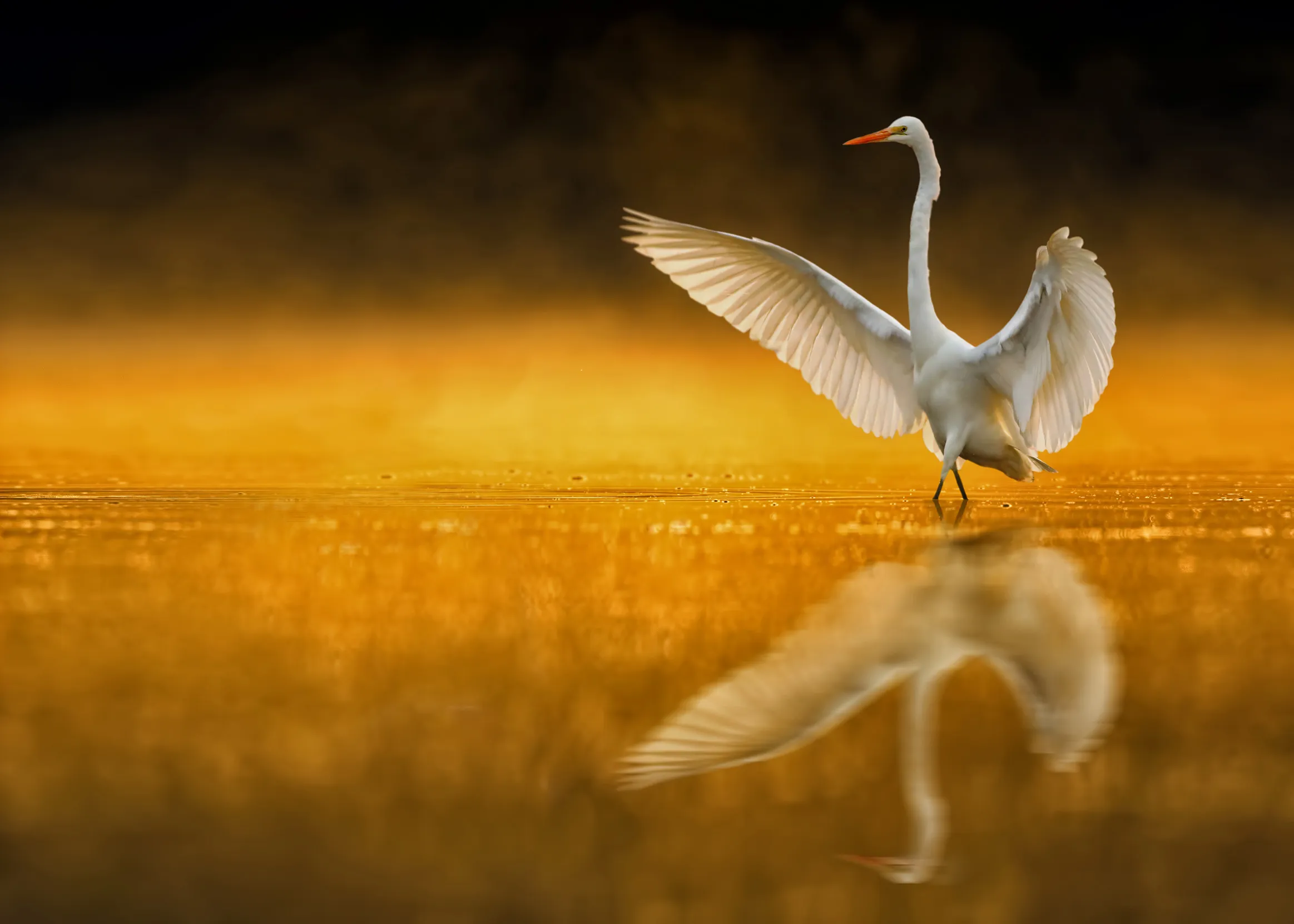News
UK seas need better protections to help tackle the nature and climate emergency
In a world first, a series of reports have revealed the extent of blue carbon stored in UK seabed habitats. Read on for ...
The fledging of three chicks near the RSPB Scotland Loch of Strathbeg nature reserve marks a significant milestone for these stunning herons.

On 22 August three Great White Egret chicks left their nest near the Loch of Strathbeg nature reserve near Crimond in the northeast of Scotland. These large birds are closely related to Grey Herons, with similar long legs and necks.
This is thought to be the first time Great White Egrets have ever attempted breeding in Scotland and the subsequent successful fledging is a significant milestone for these stunning birds.
The Great White Egret parents have been regular visitors to the nature reserve for a number of years, and this year they found a perfect nest site at the top of a tree neighbouring RSPB Loch of Strathbeg.
Great White Egrets used to be occasional visitors to the UK from continental Europe, but over recent decades they have bred in the UK. They first bred in the UK in 2012 on the Avalon Marshes in Somerset, close to RSPB Ham Wall, and have since expanded their range, moving further north and now into Scotland.
The bird’s expansion into the UK echoes increases across Europe as populations have grown in France, Spain and Italy, as they have spread from continental Europe.
One of the factors behind this is better legal protection from persecution. Great White Egrets were once hunted across Europe for the long-white feathers that form part of their breeding plumage, and which were often used in fashion. This has a particular resonance for the RSPB, as we were originally founded to campaign against the plumage trade.
Better protection of wetland sites and the creation of new habitats is also helping Great White Egrets, with our conservation work and management of RSPB nature reserves providing these birds and other wetland species with the habitats they need.
The best views of the egrets are from the visitor centre, where a telescope has been set up to allow visitors even closer views of these beautiful birds. You can also see them from the Tower Pool and Dunbar hides.
Great White Egrets hunt by standing still in shallow water, suddenly plunging their long neck into the water to catch small fish and amphibians, and the youngsters have been spotted learning to fish in the marshes with their parents.
RSPB Scotland staff expect the family to remain on the nature reserve for a few weeks, and then it is possible that some or all of them might remain on site right the way through winter.
“The adult Great White Egrets have become a regular sight on the nature reserve over the last few years, so we’re really pleased that they’ve chosen to raise a family here this summer. It’s exciting to witness the first chicks hatch in Scotland and start to stretch their wings, we’re really lucky to have such great views of them right from the visitor centre."
There are three species of egrets that can be seen in the UK, with Little Egrets the most common. All are relatively new to the UK, first breeding in the UK from within the last three decades.

Great White Egrets can be found in wetland habitats, across the UK, with strongholds in southern England.

Little Egrets can be seen around the coasts, estuaries and wetlands of England and Wales. Rarer in Scotland.

A rare bird, often found near livestock, particularly in southwest England.